Favorite Cornet
-
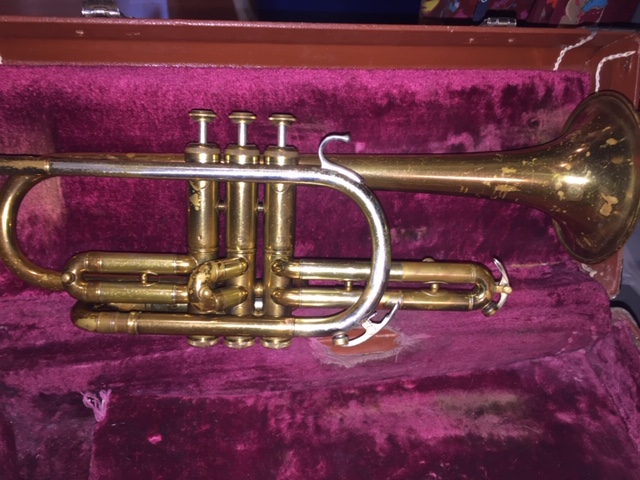
Has anyone played the Reynolds Professional back to back with a King Master? They have the same configuration as Foster Reynolds helped with the original design of the Master.
-
@Richard-III Not yet, but I do have one waiting for me at work. It will be waiting a while longer as there are a lot more high priority horns ahead of it, but I’ll let you know when I get to it. It has a sterling bell and looks identical to a Silver Tone Master model.
-
@Richard-III
Yea I say one on ebay..figured it would play like the 36A or the Master -
I have this old Conn that's pretty neat. I think it's a 9A or something like that...

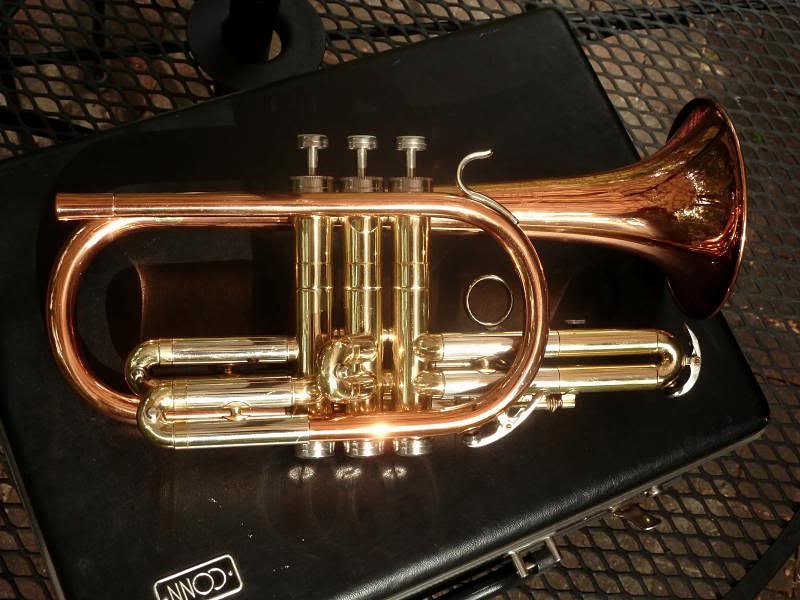
-
@adc said in Favorite Cornet:
@Richard-III
Yea I say one on ebay..figured it would play like the 36A or the MasterI have mine listed on Ebay. I've hinted that it's like a King Master but I can't say it is exactly the same as I've never played a Master.
-
The story I heard about Reynolds is that he was an employee at King and made horns after hours at the factory with his name on them. He got fired and had to produce them elsewhere. Maybe true, maybe not, but it explains the similarities for sure!
-
@flugelgirl
Yea I wondered about that. -
I’ve whittled down my cornet collection to 4 keepers:
#1 - a circa 1870 Henry Lehnert SARV made of German silver, with Allen oval port valves.
#2 - an 1890 Besson (London) Nuevo Etoile, A/Bb/C, silver plated.
#3 - a 1962 Conn 9A Victor, with Coprion bell and leadpipe.
#4 - a 1993 large bore Bach Stradivarius 184G, with gold brass bell and “Stradivarius Deluxe” engraving.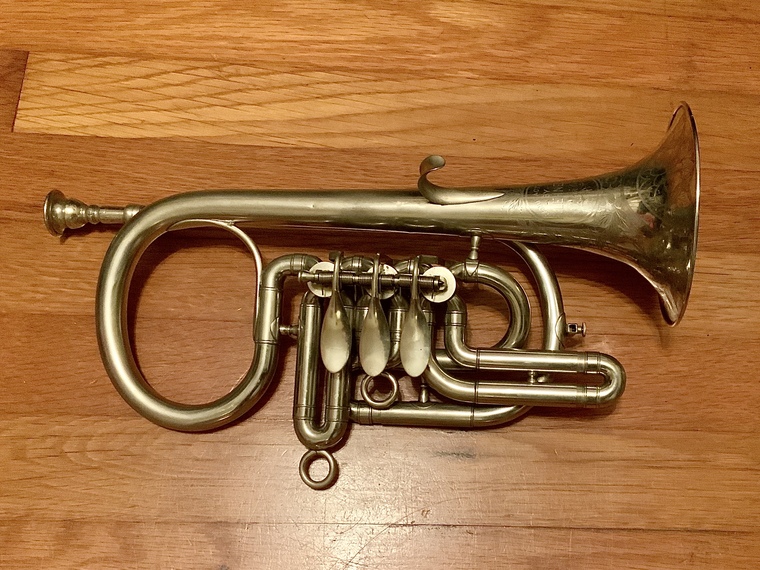
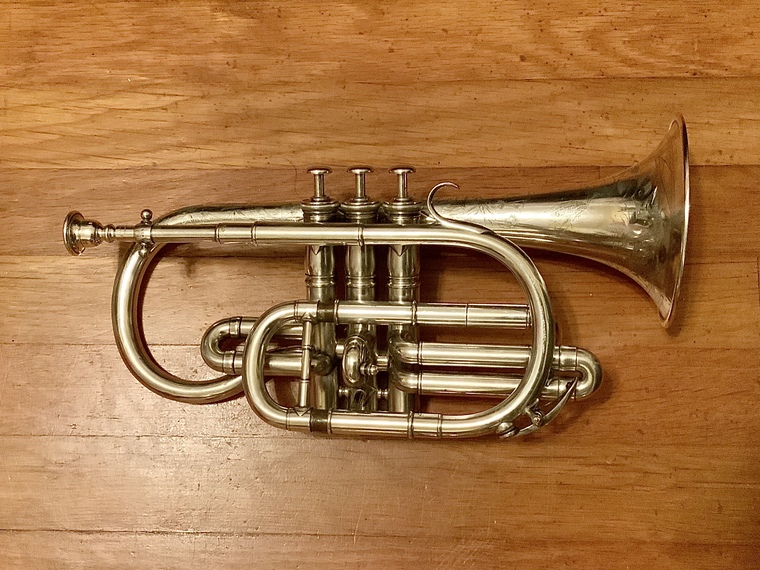
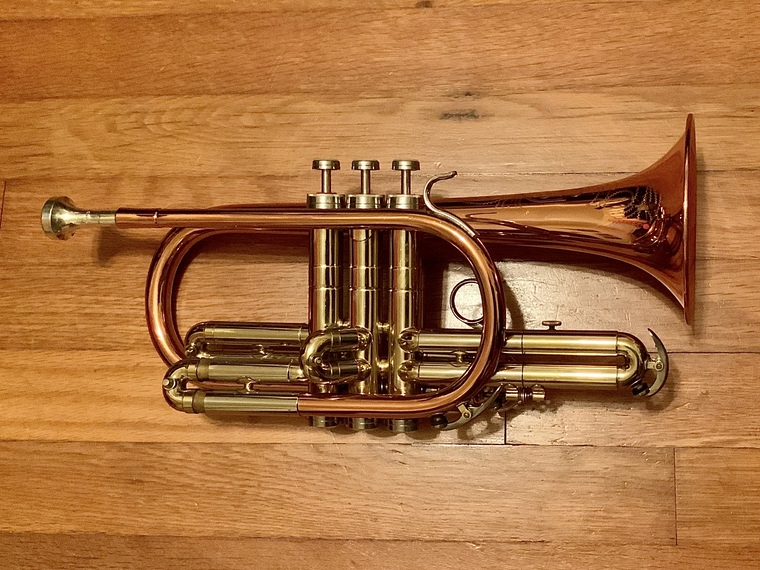
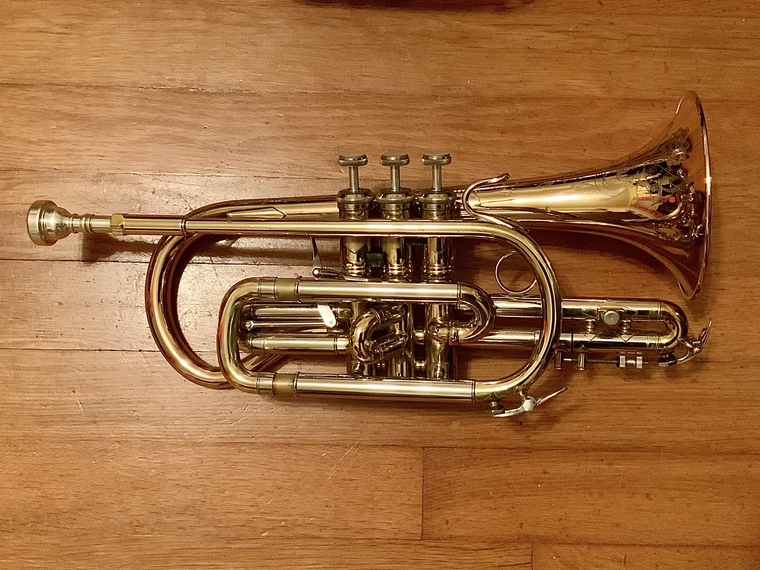
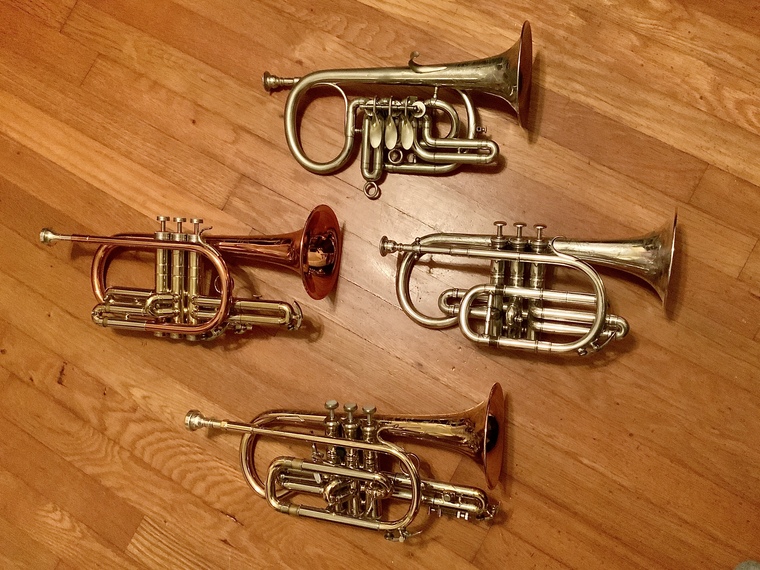
-
Like my trumpets, it depends on what I'm doing with it. But my all time favorite is playing small group jazz on my Boston 3 Star.
-
@flugelgirl said in Favorite Cornet:
The story I heard about Reynolds is that he was an employee at King and made horns after hours at the factory with his name on them. He got fired and had to produce them elsewhere. Maybe true, maybe not, but it explains the similarities for sure!
WOW. No.
Foster A Reynolds apprenticed at JW York in Grand Rapids under Pops. While not his declared area of expertise, he developed a solid understanding of valves while there. Around 1905, he was hired away by HN White, who was still operating out of a rented loft at the time. Reynolds learned more about brass design and business from White, but also shared what he had learned at York about valves - leading to the "Improved Model" series around 1911.
After 30 years there, Reynolds retired from HN White, and together with his brother Harper and Max Scherl (investor), he opened his own enterprise under the Reynolds name, and concurrently a student division named Ohio Band Instrument Co. He had expected tp be a figure-head, but his type-A personality kept him on the job 24/7. Among others, OBIC built the stencil Roth 300 trumpet. The Reynolds designs were indeed similar to what Reynolds had been doing at HN White (It wouldn't become King Musical Instruments until 1965), as designing a new lone was not what he had in mind as "backing off".
But Reynolds still wanted to retire. In 1946, as soon as the war was over and it was possible, Foster and Harper sold their interest in the company to Scherl & Roth. Most of what we see under the Reynolds name, made after 1946, is not related to FA Reynolds.
Shortly thereafter however Chicago Musical Instruments lured Reynolds out of retirement to help restructure FE Olds. There in 1949, with Harper making the required additional tooling on a lathe that still exists in the custody of a member of the extended FE Olds Corporate family's care, he launched the Ambassador line.
At Olds, Reynold took on an apprentice, Zigmant Kanstul - probably hoping to hand over the reigns one day and finally get some R&R. Zig was there when FA died of a massive heart attack in 1960 on the shop floor at Fullerton. It should come as no surprise that like the mentor he looked up to the rest of his days, Zig too died at his plant.
-
@OldSchoolEuph thanks - always fun to hear the real stories after hearing the rumors
